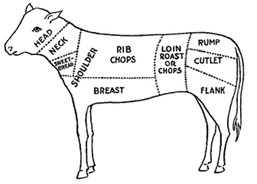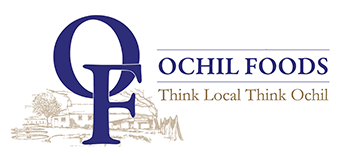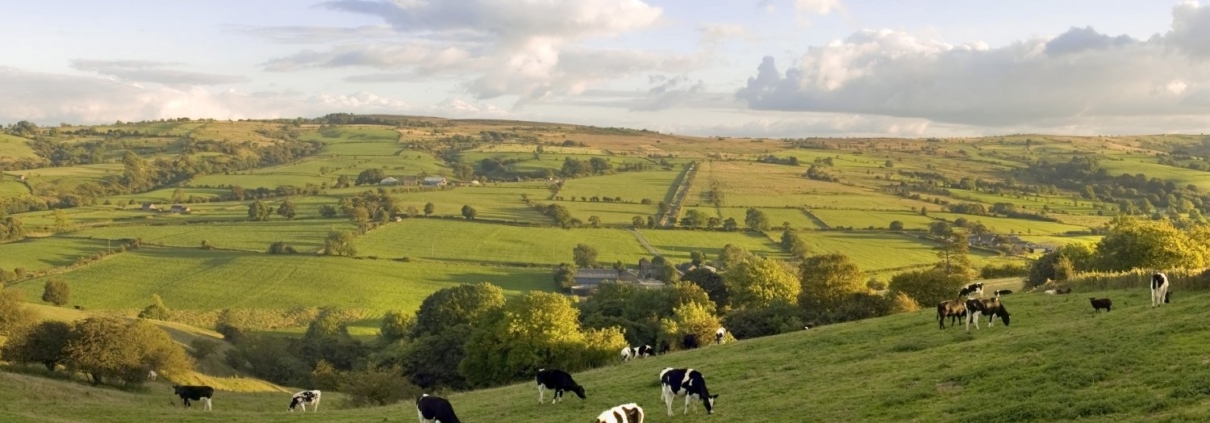British Rosé Veal – Why we must Champion it
British Rosé Veal – Why we must Champion it?
Veal has been a dirty four letter word since the 1990s. But thanks to some enterprising, ethical farmers across the UK, it is beginning to rightly be viewed as one of the most sustainable meats available.
We must continue to support and Champion British ethically produced Rosé Veal. This article attempts to explain why.
What is Veal?
Veal comes from the calves of milking cows. Although Veal can come from calves of both sexes, the majority comes from bullocks, as they can’t be used for milking. If there is not enough demand for veal consumption the bullocks are killed at birth and disposed of, hence why we should all encourage the eating of Rosé Veal, the most sustainable of meats.
What is Rosé Veal?
Rosé Veal in the UK is raised under strict welfare guidelines. Its name comes from its pink colour, which is a result of the calves being slaughtered at around 35 weeks.
What is White Veal?
White Veal calves are kept in confined spaces on slats or concrete or even in crates so they can’t eat anything else but milk. They stay on milk for 20-22 weeks and consume up to 22 litres per day. White Veal is not to be encouraged for these reasons.
What is the life cycle of a Rosé Veal Calf?
On Veal Farms, the calves are kept in spacious natural light-filled open sheds, with open sides on thick straw beds to keep out the damp.
The calves are fed solely on milk for the first eight weeks of their life. The quantities consumed are closely monitored to ensure healthy calves. They are fed a maximum of seven litres of milk a day, followed by a starter pellet and then a blend. They are kept up until they are 8 months old, living a comfortable, happy, healthy and spacious life.
Why we should eat Rosé Veal?
If we don’t eat the bullocks of dairy cows, what happens to them? Despite the recent upsurge in popularity and understanding of Rosé Veal, large numbers are still shot at birth. In 2009, 260,000 calves were killed at birth as a waste product of the UK dairy industry. Of those that were spared some were exported and raised as white veal, which was banned in the UK in the 1990’s. (Matt Walton 2009 (http://ecocurious.wordpress.com/2009/11/15/why-you-should-eat-british-rose-veal/).
Which ones are the lucky ones is a matter of your point of view.
I think this gives a pretty compelling argument as to the ethical and sustainable reasons for choosing British rose veal.
It is therefore our responsibility as farmers, producers, suppliers and chefs to champion Rosé Veal.

What Cuts of Veal are available?
o Veal Topside
o Veal Silverside
o Loin
o Knuckle
o D Rump
o Rib Eye
o Shin B/in
o Diced Shoulder
o Liver
o Sweetbread
o Cheeks
The Farmers
We work with Buitelaar Rosé Veal, based in Wrexham, North Wales. Ethically reared through their integrated and fully traceable supply chain, their multi-award winning British Rosé Veal is renowned for exceptional tenderness and eating quality.
Their Rosé Veal animals are reared to the highest of welfare standards on family farms which has seen their supply chain win the 2019 Compassion in World Farming Good Calf Award. Their full traceability allows them to track every animal processed from farm to fork. They provide regular on-farm support to their farmers to ensure they meet their stringent specifications and techniques required throughout production.




Please can you tell me do one pronounce Rose Veal like the flower or the wine?
Thank you kindly
Tracey